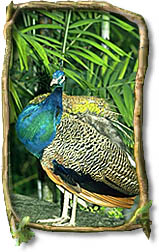Located south of Kota Kinabalu in Sabah. Although there are no tourist facilities at this park, Crocker Range is densely populated with wildlife and is a trekker's paradise. Primates such as orangutans, gibbons, tarsiers, longtailed and pigtailed macaques, along with porcupines, bears, civet cats, marbled cats, and wild pigs roam the park freely. Hornbills, pheasants and partridges can also be seen, as well as the renowned Rafflesia, the world's largest flower. 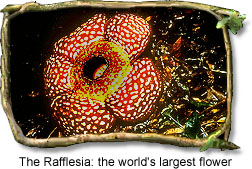 |
 It would be difficult to overstate the attraction of Malaysia for anyone who appreciates the natural world. Its primal forests, ranging from shoreline mangrove to mountaintop oak, are of the sort that most of the world now knows only in myth. Although Malaysia's size is similar to that of Norway, natural trees and forests cover almost three quarters of the land, an area equivalent to almost the entire United Kingdom. One can walk for hundreds of miles in Malaysia under a continuous canopy of green, marveling at an abundance of plant and animal species equaled by no other location in the entire world. A single half-kilometer plot of land in Borneo's lowland dipterocarp forest, for example, may well contain more than eight hundred different species of trees alone, a stunning degree of variety that pales, however, in comparison to the profusion and diversity of flowers, birds, ferns, and insects.
It would be difficult to overstate the attraction of Malaysia for anyone who appreciates the natural world. Its primal forests, ranging from shoreline mangrove to mountaintop oak, are of the sort that most of the world now knows only in myth. Although Malaysia's size is similar to that of Norway, natural trees and forests cover almost three quarters of the land, an area equivalent to almost the entire United Kingdom. One can walk for hundreds of miles in Malaysia under a continuous canopy of green, marveling at an abundance of plant and animal species equaled by no other location in the entire world. A single half-kilometer plot of land in Borneo's lowland dipterocarp forest, for example, may well contain more than eight hundred different species of trees alone, a stunning degree of variety that pales, however, in comparison to the profusion and diversity of flowers, birds, ferns, and insects. This endlessly varied environment also shelters a host of the world's rarest and most remarkable animals: the Sumatran Rhinoceros, the Clouded Leopard and Malaysian Tiger, the Sun Bear, the Monitor Lizard, and the Orang Utan, or "man of the forest," are just a few examples. Malaysia's forests are also home to Southeast Asia's highest peak, as well as to the world's most extensive and capacious natural caverns. The forest itself is one of the most ancient on the planet, far older than the equatorial forests of the Amazon or the Congo. It has for tens of thousands of years been the home of nomadic forest peoples, 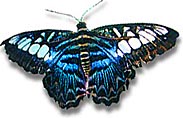 and ancient civilizations have flourished as well as disappeared in its vastness. Legends abound, and archaeologists have only just begun their efforts here. Equally exciting discoveries are now being made by genetic biologists, who have begun searching the wealth of life in Malaysia's forests for new medicines with which to combat AIDS, cancer, and many other illnesses.
and ancient civilizations have flourished as well as disappeared in its vastness. Legends abound, and archaeologists have only just begun their efforts here. Equally exciting discoveries are now being made by genetic biologists, who have begun searching the wealth of life in Malaysia's forests for new medicines with which to combat AIDS, cancer, and many other illnesses.
 and ancient civilizations have flourished as well as disappeared in its vastness. Legends abound, and archaeologists have only just begun their efforts here. Equally exciting discoveries are now being made by genetic biologists, who have begun searching the wealth of life in Malaysia's forests for new medicines with which to combat AIDS, cancer, and many other illnesses.
and ancient civilizations have flourished as well as disappeared in its vastness. Legends abound, and archaeologists have only just begun their efforts here. Equally exciting discoveries are now being made by genetic biologists, who have begun searching the wealth of life in Malaysia's forests for new medicines with which to combat AIDS, cancer, and many other illnesses. And that is only the forest. Malaysia's offshore islands are of legendary beauty. For millenia, Pulau Langkawi and Pulau Tioman have been sought-after havens of peace from the turbulent outside world, a tradition that is evidenced today by their international status as holiday destinations. Pulau Sipadan, a small oceanic island off the eastern shore of Borneo, rises in a sheer column more than six hundred meters from the seabed. Completely encircled by sheer drop-offs and walls, Sipadan is one of the world's foremost dive sites.
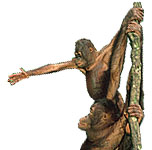 In order to safeguard its precious natural heritage, Malaysia has set aside many areas as parks and wildlife reserves. Together with natural forest management, conservation of wildlife, birds and marine life, nature reserves have been established through a network of protected areas. Almost one and a half million hectares of conservation areas are protected by legislation.
In order to safeguard its precious natural heritage, Malaysia has set aside many areas as parks and wildlife reserves. Together with natural forest management, conservation of wildlife, birds and marine life, nature reserves have been established through a network of protected areas. Almost one and a half million hectares of conservation areas are protected by legislation. Besides the many splendid sights in Malaysia's National Parks, visitors can enjoy an exhaustive tour of thrills and spills during their visit--boating through swirling rapids or between emerald green islands, stalking big game and fly-fishing for giant carp, bird-watching, mountain climbing, spelunking, swimming in placid river waters, or camping amidst giant tropical trees.
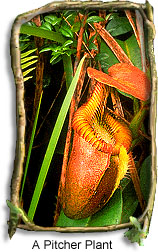 The Endau-Rompin area covers the boundary between Johor and Pahang. Sprawling over an estimated area of almost nine hundred suqare kilometers, it is one of the few remaining lowland forests in Peninsular Malaysia. It encompasses the watershed of the rivers Endau and Rompin, from which it derives its name The Endau-Rompin area covers the boundary between Johor and Pahang. Sprawling over an estimated area of almost nine hundred suqare kilometers, it is one of the few remaining lowland forests in Peninsular Malaysia. It encompasses the watershed of the rivers Endau and Rompin, from which it derives its name |
A prime nesting site, the Kuala Gula Sanctuary in Perak has over a hundred species of birds, some of them protected. It is situated in the mangrove swamps south of Bagan Serai. The peak months for bird watching are between August and December. |
A twenty-minute drive from Sandakan, Sabah will bring you to Sepilok Forest Reserve, a enormous area 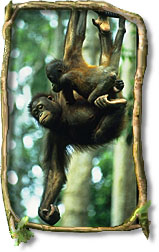 of virgin equatorial rainforest. The wealth of indigenous and rare plants, animals and birds that have found sanctuary here are to be seen to be believed. There are numerous self-guiding trails to help the visitor explore the reserve. of virgin equatorial rainforest. The wealth of indigenous and rare plants, animals and birds that have found sanctuary here are to be seen to be believed. There are numerous self-guiding trails to help the visitor explore the reserve. A most interesting feature of the reserve is the Orang-Utan Sanctuary. Here Orang Utans which have strayed into logging camps or rescued from captivity are cared and sent back to the forest. |
